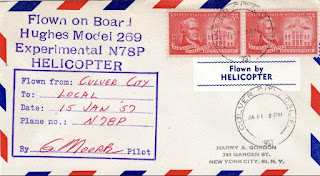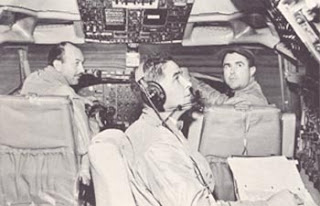
Jacqueline Auriol was France's most distinguished aviatrix. She was born 5 November 1917 in Challans, France, the daughter of a wealthy shipbuilder and timber importer. After graduating from the university in Nantes, she studied art at the Ecole du Louvre in Paris.
In 1938, she married Paul Auriol, son of Vincent Auriol, a prominent leader in the Socialist party. During World War 11, Madame Auriol, by that time the mother of two sons, evaded Gestapo agents and assisted the French Resistance. After the war ended, Vincent Auriol became President of France, and Paul Auriol served as his father's press secretary.
She soon became immersed in the social activities of the Palais Elysee and she took up flying in 1947, earned her tourist license the following year, and started stunt flying. In July 1949, she was severely injured when a seaplane, in which she was a passenger, crashed into the Seine. Over the next two years, she underwent 22 operations to rebuild her face. But she did not give up flying. Between her last two operations in the United States, she earned her helicopter rating in only four weeks at the Bell Aircraft factory in New York.
In 1950, she gained her military license and qualified at the Flight Test Centre at Bretigny, France, as the world's first woman test pilot. On 11 May 1951, she set a new women's speed record in a British Vampire jet, flying 508.8 mph beating Jacqueline Cochran's previous record, set in a P-51. This began a friendly rivalry between the two ladies, and they traded the women's world speed record for over a decade,she went on to beat her own record on 21 December 1952 in the Mistral.
Flying a Mystere IV on 3 August 1953, she became the second woman to break the sound barrier. She then reclaimed the speed title from Cochran on 31 May 1955, this time in the Mystere IVN. The title of "fastest woman" returned to Auriol two more times: on 22 June 1962 in the Mirage IIIC and on 14 June 1963 in the Mirage IIIR. Later, she was one of the first pilots to fly the supersonic Concorde. She was awarded the 1952,1953, and 1955 Harmon International Trophies, the Paul Tissander Diploma in 1953, the 1963 Gold Air Medal, La Grande Medaille de L'Aero Club de France in 1963, and the Legion d'Honneur for her record-setting achievements.

























